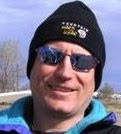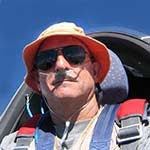Alby's Progress
Map Legend
___ Attempts
___ Proposed legs
___ Trip "by glider" to NY
Click, hold and move the mouse to move the map.
Point hand's finger, click on markers to read airport information.
Point hand's finger, click on path legs to read flight information.
Click on Sat (bottom left) to see aerial picture, enlarge to see airport.
Click on "View Larger Map" above to see full screen .
latest news
9/14/2015 - Alby arrives at First Flight, Kitty Hawk, NC!
Heartfelt congratulations to Alby pilot Eric Lambert, who found reliable lift on a blue day to get Alby safely to Kitty Hawk, for a well-deserved rest. Eric's notes on the flight are found in more detail below.
Briefly, he said, "I will return to First Flight in the morning and plan to meet with Karen Warlitner, the Executive Director of the First Flight Foundation, for a photo-op. We would like to have a photo of Alby next to the Wright Flyer. On Thursday and through the weekend, we hope to take advantage of this spell of good weather to fly Alby north."
8/31/2015 - Alby flew Sunday from Chesapeake, VA to Currituck , NC with Albypilot Eric Lambert in his motorized Grob 103.
Eric said that he found clouds to 5,000’ and lift up to 4 knots. He got low (1,700’) at the Academia facility (U.S. Training Center) but got back up to 4,000’ and then to Currituck. He said it was not difficult – sure I believe it, when the conditions are good! The flight of 25 miles required only two thermals, but it was one of the very few days that there were clouds and workable lift and no adverse winds. Clouds and lift disappeared soon after the landing.
Eric wants to spend four days of the long Labor Day weekend trying to fly with Alby the 33 miles from Currituck to First Flight Airport, a place that is so historically important for all aviators. Not an easy thing to do since near the coast the weather is not favorable to soaring in general, and in this case in particular the glider has to fly for several miles directly above water.
TALES OF THE FLIGHTS
Alby flight No. 4 - Luke Ashcraft, 11/15/2008
After heading to Rumsey Gap and turning within a mile of the turnpoint, I retreated towards Charter's airstrip. En route the wind in the lee of the hills was creating a considerable area of sink, and I arrived and my landing point with no altitude to spare. I landed and rolled to the south end of the dirt strip with large orchards on either side, not suitable for the dimensions of an open class glider.
After hopping out of the glider, I realized I forgot my cell phone. I walked to the nearby house, rang the bell and then politely asked the woman who opened her door if I could please use her phone. I told here I forgot my cell phone at the airport and just landed in her driveway. She let me in and it was very dark inside . It was a nice house but the TV was turned on and her elderly mother was resting on their couch. Please realize that outside it was a gorgeous fall day of 70 F and visibility of 150 miles and I thought, this is America - A family inside watching TV. But she was very nice and I used her phone, the bird and Alby safely returned to the gliderport.
View flight on OLC
Alby flight No. 3 - Peter Kelly, 11/4/2008
Although I recognized that the Alby Flight was quite important, other matters needed to be attended to before I would be allowed to fly with Alby on Tuesday, November 4th, 2008.
This was the historic day on which Barack Obama would be elected president of the United States, thus it was urgently required that I cast my ballot. Voting was the highest priority of the day, even before Alby. The second challenge was to garner permission from the gliderport management to allow a special flight operation on a day on which the airport is closed.
By 9:30 AM voting had been accomplished, permission to operate had been received from the gliderport. In fact, a tow was graciously offered to me. Now for the final review of the weather, commute from home to the gliderport, assemble the glider and prepare for the flight.
I located my camera, loaded the flight computer, and insured that I would have a current Sectional Chart aboard the glider. Unfortunately, I did not mount the camera or preset the time date stamp, did not review my route of flight on the computer and did not prefold the Sectional chart before Takeoff. It was well past 1 PM before Alby was placed aboard my glider, and we finally prepared to hook up the tow rope.
With Alby aboard, I towed to the northwest of the field, insuring the Alby would not have the benefit of a tow even for a small portion of his journey. It was important that all travel be conducted in free flight - on the wing - sans any propulsion systems.
Our progress was being published every ten minutes on the internet using the satellite messenger system - SPOT, and I was sure we had many Alby fans cheering us on. I took many photos during our journey, documenting nearly every cloud. The day looked very promising.
Alby and I were quite optimistic as we headed past Dunnigan, but we knew we should have launched much earlier. Conditions were there an hour earlier, but I wasn't ready to fly, and I couldn't take any chances with my precious cargo aboard.
I could not establish radio contact with the gliderport, but I transmitted in the blind at 5,000 near the I-505 intersection. That must have been garbled when being received at WSC.
My max height for the day was there at 5/505 and it was about 6,000 ft.
Expecting to pass directly over Travis AFB and probably at a low altitude, it was important that I requested flight following from the Air Traffic Control agencies. I tuned the radio to NorCal, who handed me off to Travis Approach - North Sector. Approaching Vacaville, we were handed off to the South Sector. As we glided over I-80 and then above the towers at Lagoon Valley, we were now down to 2,000 feet. Finding a nice thermal on the downwind side of the ring of hills we climbed up to 5,000 feet as we drifted into the class D airspace of Travis, with their full permission. Remaining well below the nice cloud street heading off towards the south of Stockton, we crossed overhead Travis and as we did so, I struggled with folding and refolding the Sectional Chart. As we approached Rio Vista at about 3,000 ft. I terminated the radar flight following in hopes I could salvage my glide to Byron, I was so close, but I had failed to establish a glide to the field.
At this point I considered going back to the northwest and do a climb to 5,000 for a glide through the blue air to Byron but Alby deserves better than just barely making the runway. I tried to continue to run the clouds and was planning on an approach to Byron from the east, but I never got the needed climb.
We drifted south, under cloud remnants, but all the while, sinking lower and lower. I was staying within glide of a duster strip about 6 miles to the East of Byron when I finally fired up the iron thermal. Alby had been encouraging me to not stretch the glide, so back to Williams we went. I made a video of our landing at Williams and placed it on YouTube. you can see there were still lingering cloud remnants - even at 20 minutes before sunset. see YouTube video at...
http://www.youtube.com/watch?v=TSTPZj60eoM
It was a good day. Alby is now resting comfortably at Williams, awaiting his next adventure.
View flight on OLC
The flight of the Albatross across our Country caught the attention and the fantasy of a newsmaker, Adam Breen, who published a well written and inspired article in Hollister's "The Pinnacle" newspaper: www.pinnaclenews.com/news/contentview.asp?c=255106
Alby's Story
Alby is a Laysan Albatross. He was born and raised in the Midway Islands, not far from the very same Laysan Island that gives names to all the individuals of his species. His parents fed him for six months. They alternated trips of one or two weeks, during which one of them was feeding and the other was protecting Alby and the nest. The long intervals were necessary because often the food was very far away, up to 400 or 600 miles away. They fed him until he became as big as them, and then suddenly deserted him. They did that because they instinctively knew that he was developed enough to take care of himself from then on. And they could not spend all their energies in raising a chick. Although they can live 40 to 60 years, they can only raise a chick every couple of years.
The young albatross did not know all the tricks of life at sea, and the first year he had difficulties at times. One half of the fledglings do not make it through the first season, but Alby did, and everything was much easier after that. He went out on the open ocean and did not come back for years, not touching land at all, living off the bounty of the ocean, sleeping on it, learning to travel using the wind forcing the air up against the moving ridges formed by the waves.
Alby came back to his native island when he was three years old, because his biological clock was giving him the urge to look for a mate. His tentative dances with prospective mates were as clumsy as those of the other young albatrosses around him. Naturally nothing happened, but he experienced and practiced the ways of the elders.
He is 4 years old now. He has wandered the ocean all this time. He has gone through the vast expanses of water finding food, freedom, and safety. He has gone to the north Pacific and flown around the Aleutian Islands and the Gulf of Alaska and the fiords of British Columbia. Next year he will try again to go back to his birthplace to search for a mate, and probably will find one.
Albatrosses are at home in the open ocean, keeping at least 30 miles offshore. But Alby is different. He is curious about the land, just as curious as a young soul can be. In his voyages near the northern seashores he watched eagles fishing for salmons. That was not his preferred food, but he looked with interest at this different method of fishing. He communicated with the eagles, answering their whistles with his screeches.
He is fascinated by the land, but unable to penetrate it - he is used to mastering the wind over the waves, and the different way of flying inland is unfamiliar to him. He asked Eagle about the extent of the land, and Eagle said that there is land up to the summit of those far away mountains to the east, and more.
One day he met Pelican, and while they were floating and chatting over the gentle waves of a mild afternoon he learned that Pelican had actually been inland while flying with his flock. He had flown across the fertile valley of California, and over the magnificent mountains of the Sierra Nevada and farther more to the northeast. Alby learned that inside the land, beyond those far away mountains, there is a great lake, and peaks with snow, and forests and valleys, and towns and people.
Pelican described the beauty of the land, which is called America, according to what he heard when people talked about it. Being a sociable character, when he was inside the land Pelican also had contacted other big birds and knew a good deal about what lay farther inside that large country.
Pelican learned from the other birds that there are large deserts and arid mountains in the interior highlands. There are very few people in those deserts, few roads, few machines. Nature is mostly untouched by man there, with many animals running free. The air is not disturbed by artificial smells and mechanical noises. It takes many days of overflying this natural environment before reaching the majestic mountains of the Continental Divide. Here the land is green again with large forests. Snow may remain up to late summer, the rocks are harsh and austere.
From there one can overfly the vast farmlands that gradually decrease in elevation until they make room for the mighty rivers that cut the America land in two. Pelican had also contacted seagulls that told him about more land to cross going east, with plenty of houses and towns and people. There are cities sporting very high buildings that tower up toward the sky. There are rivers and lakes where an aquatic bird can feed. He heard tales from vultures and hawks that there is another long range of lower mountains and beyond that, couple of days away as the crow flies, there is ocean again.
Alby would like to go inland, see the beauty of the country, but he is not fit to go there. He does not know how to master the thermals the way eagles, pelicans and other birds with big wings travel there. He is made for the ocean.
Still he would like to go and try to cross this enormous island that he cannot cross, and get to the sea on the other side.
One day he flies along the shore, and sees some very big wings flying along the cliffs of the big town called San Francisco, as he understands people call this place.
Approaching those big wings, he realizes that there are people hanging on them. He discovers then that people cannot fly on their own, but have created artificial wings that support them. He knows what they are doing; he knows how to fly along the cliffs. He knows that, ‘cause such was the very kind of flight he took when he left his nest for the first time.
Soon those cliffs become a favorite place for Alby. He flies there often and so close to the flying people that learns many of the words they speak. He listens and learns that there are even bigger and faster flying machines with long wings for the people that like to fly like birds, which are called gliders or sailplanes. And there are flying crafts with propelling engines, capable of transporting many people at high speed. He understands now what are those enormously high flying machines that cross the ocean, so high that he barely can hear their sound through the whistle of the wind.
The flying people are impressed by the unusual behavior of this albatross, which so often flies with them instead of flying far away in the ocean like others members of the same species. They imagine that Alby wants to travel ashore, but does not trust doing it by himself.
The soaring people offer to take Alby inland, and to show him the beauty of the countryside. They offer to take him aboard their flying machines and let him cross this big island in silent winged crafts, no noises, no vibrations, no offending gas smells.
Alby accepts the invitation. He wants to see the mountains, the valleys, the lakes, the deserts and the forests, and the towns and the towers, and the roads and the bridges and the rivers of this beautiful land called America. He realizes that it is not possible for him to travel here alone, without the help of the flying people.
So the soaring people take Alby in their silent aircrafts across that vast territory. They understand. Because they themselves share the curiosity, the need for adventure, the thirst for knowledge of that young spirit. They share the independence that flying gives, the endless autonomous decisions that need to be taken in this constantly moving environment. They know the far-reaching view that this privileged position allows. But most of all, they share the elation of infinite freedom by being immersed in the sky, floating, suspended in the brilliance of this transparent ocean. Those are the reasons why they aimed for the skies, and now they cannot live any more without the magic of flight.
They take Alby with them, in the togetherness that unites all aviators. Alby’s great voyage has just begun.
Rules
ORGANIZATION OF THE VOYAGE
This website is recording the flights of Alby, his whereabouts and his flight log. The webmaster of the site is the Albymaster. All news and inquiries about Alby will be handled by this site.
Alby wishes to soar across America. He wishes to see it all, from the Pacific Ocean to the Atlantic, and then resume his wandering life across the seas.
Alby flies only in aircraft that use the energy contained in the atmosphere as a means for traveling. Motorgliders can use their engine only for taking off.
A proposal to fly with Alby shall be sent to the Albymaster. A proposal shall include a pre-declaration of the proposed flight.
Preference will be given, in order, to the site that is closer to Alby’s current location, to the first proponent in order of time, to soaring clubs or associations, to groups of pilots, or to an individual pilot. This means, for example, that an individual pilot has to wait for the soaring club to fail its attempt, before making its own attempt.
A club or pilot that has proposed to fly with Alby and has been accepted by the Albymaster, will be called the Albypilot. When a proposal is accepted, the flight should be made before the end of the next Friday.
If no other Albypilots have made the flight on their assigned week, the hosting club or pilot will have the right to make the flight before the end of the next Friday. If the host did not propose or is not able to make the flight, the next Albypilot shall make the flight before the end of the next Friday. And so on.
RULES FOR THE FLIGHT
Gliders can be towed to an altitude not exceeding 3,000’above take-off. Motorgliders will shut off their engine before that altitude is reached. The release or engine shut-off point shall be west of the take off field.
Each landing point will be to the east of the take-off point. If difficulties arise, an occasional back leg may happen, when accepted by the Albymaster.
The flight should end in a soaring site, or a place from where a glider can be towed out. If the flight does not end in the pre-declared location, the Albypilot or a pilot of the same club still have to the end of the next Friday to try and complete the flight as declared. If the pre-declared location still is not reached, Alby must be taken back where it started (not necessarily by flying).
Both the current host of Alby and the new host shall communicate the outcome of the flight to the Albymaster.
If the flight cannot be made before the end of the next Friday by the first Albypilot, it is the responsibility of the first Albypilot to give notice of the inability to make the flight, with timely courtesy, to the Albymaster, to the host, and to the second proponent in line.
The Albypilot who flies with Alby is responsible for keeping good care of him. When the Albypilot represents a soaring club or association, the representative of the club or association will be responsible for the well being of Alby.
The above rules may be superseded by the Albymaster when atypical circumstances arise.
Order of Preferences:
1 - The club that is closer to Alby’s current location
2 - The club that proposes first in order of time
3 - Clubs, soaring associations, soaring centers
4 - Group of pilots
5 - Individual pilots
ACCESSORY RULES
When start altitude, release to the west, landing to the east are difficult because of special local conditions, an exception may be requested to the Albymaster.
When an Albypilot cannot make the flight in the week he/she has been assigned, another Albypilot can make the flight provided he/she has been accepted by the Albymaster.
LOGBOOK, LAPEL PINS, SPOT DEVICE, GPS TRACE
LOGBOOK - Alby travels with a logbook. The Albypilot will fill out the log entry and sign it. The flight data will be e-mailed to the Albymaster and an entry will be placed in the website logbook. A description of the flight and pictures may also be sent along with the flight data, to be posted in the website. Enter all flights, successfull or not.
LAPEL PINS - The Alby case contains lapel pins. The pilot(s) successfully accomplishing a flight will get one pin each. The lapel pins are numbered. Check in the log book for the last pin number and take the subsequently numbered pin(s). If the flight is not successfull, place a bar in the last column (Pin No.). Please guard carefully the pins, we do not want them to misteriously disappear.
SPOT DEVICE - The SPOT device is to be placed in the glider in a place where there is sufficient visual contact with the outside (inside a shirt pocket is OK). It is to be used during the flight and placed in Alby's case when not flying. Instructions for use are in the case.
GPS TRACE - Pilots are encouraged to send their GPS log no matter how successfull the flight, as it will be posted in the map (flying with Alby is already a great success, to be recorded and displayed). Alternatively, it can be downloaded to OLC.
DISCLAIMER
Pilots who participate in Alby’s voyage acknowledge that it is a voluntary effort, and that the timing, route selection, weather decisions, and all other aspects of the flight are the sole responsibility of the pilot in command of the aircraft in which Alby is transported. The Organizers of Alby’s voyage, retain all rights to the concept, images, logbook, Alby trophy, and eventual chronicle of the journey, but neither they nor volunteers involved in the project nor the Pacific Soaring Council (PASCO) nor the Soaring Society of America (SSA) are in any way responsible for the decisions of the pilots that carry Alby in their aircraft. When pilots propose to carry Alby on part of his journey, they warrant that they have sufficient experience and will exercise all due caution to ensure the safety of their flights. By allowing pilots to carry Alby, the Organizers of the Alby project are merely keeping track of and attempting to facilitate the continued progress of Alby’s voyage.
WAIVER AND ASSUMPTION OF LIABILITY
Please accept me as a participant in the Alby voyage. In consideration of acceptance of this entry, for myself, my heirs, executors, administrators, personal representatives, successors or assigns I hereby release and discharge the Organizers, The Pacific Soaring Council (PASCO) THE SOARING SOCIETY OF AMERICA, INC., and their agents, representatives, employees, successors or assigns from any and all claims for damages or injuries suffered by me or by any member of my crew during the aforementioned soaring venture.
I further agree to assume full responsibility for and to indemnify, defend and hold the aforementioned entities and persons harmless from any and all legal obligations for damages to personal property owned by, or injuries suffered by, any spectator or contestant or personnel of the aforementioned entities, or by any other person or entity, which may be caused directly or indirectly by my participation in the venture. I further certify that I have read, understand, and agree to abide by the rules and regulations of the aforementioned endeavor.
I fully understand and agree that I am waiving any claim for damages that I may suffer by virtue of any act of negligence arising in the future by any act or omission of any of the aforementioned entities or persons or their agents, representatives or employees, and that the consideration for this waiver is the permission by the sponsoring or presenting bodies of the aforementioned venture allowing me to participate in the said venture and that such permission is being granted me in the reliance upon this waiver as set forth in this entry form.
Tracking the flights with SPOT

Where in the world is Alby?
Scroll below to follow Alby flying in real time. For more detailed information on the flight go to our Spot satellite tracking page.
Position updates are broadcast in real time every 10 minutes, although occasionally there may be delays. If Alby is not flying at this time, the trace shows Alby's most recent flight. Traces are left posted for the duration of one week only. However, the flight can be seen on OLC.




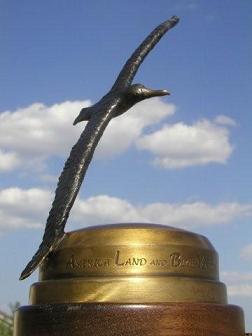


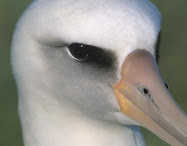
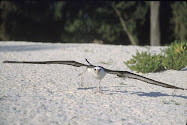

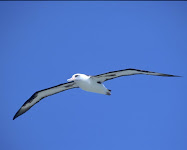
.jpg)
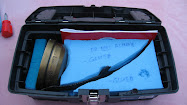.jpg)
.jpg)
.jpg)
.jpg)
.jpg)

.jpg)
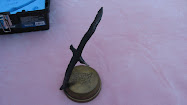.jpg)
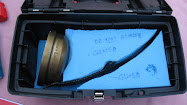.jpg)
.jpg)
.jpg)
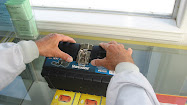.jpg)
.jpg)

.jpg)




